English, late 17th century.
Measures 28 x 23 x 8cm.
The casket is set with silver corners engraved with floral swags and scrolls, of which comparisons can be made with English snuff and spices boxes of the period. The central silver plaque is decorated with a similarly engraved border containing an oak tree, in the middle of which can be seen the head of Charles II. The oak tree is surrounded by a poem and sentiments commemorating the historic escape:
‘When Englands Monarch, from impious Rebbels fled and found no shelter for his sacred head. I gave him refuge and from their stroak, secur’d his Royall person in this oak.’
And
‘From whence this chip was cut, Accept it as divine being humbly offer’d att your more purer shrine.’
The Royal Oak was the English oak tree where King Charles II of England hid to evade the Roundheads after the Battle of Worcester in 1651. This tree was located in Boscobel Wood, within the grounds of Boscobel House. The Boscobel oak tree, also known as the ‘Royal Oak’ is said to have been destroyed during the seventeenth and eighteenth centuries by tourists who cut off branches and chunks as souvenirs.
Provenance: A label attached to the key reads ‘Turner, Parsonage House, Church Street, Henfield, West Sussex BN5 9NU - Oak box on table in study’.



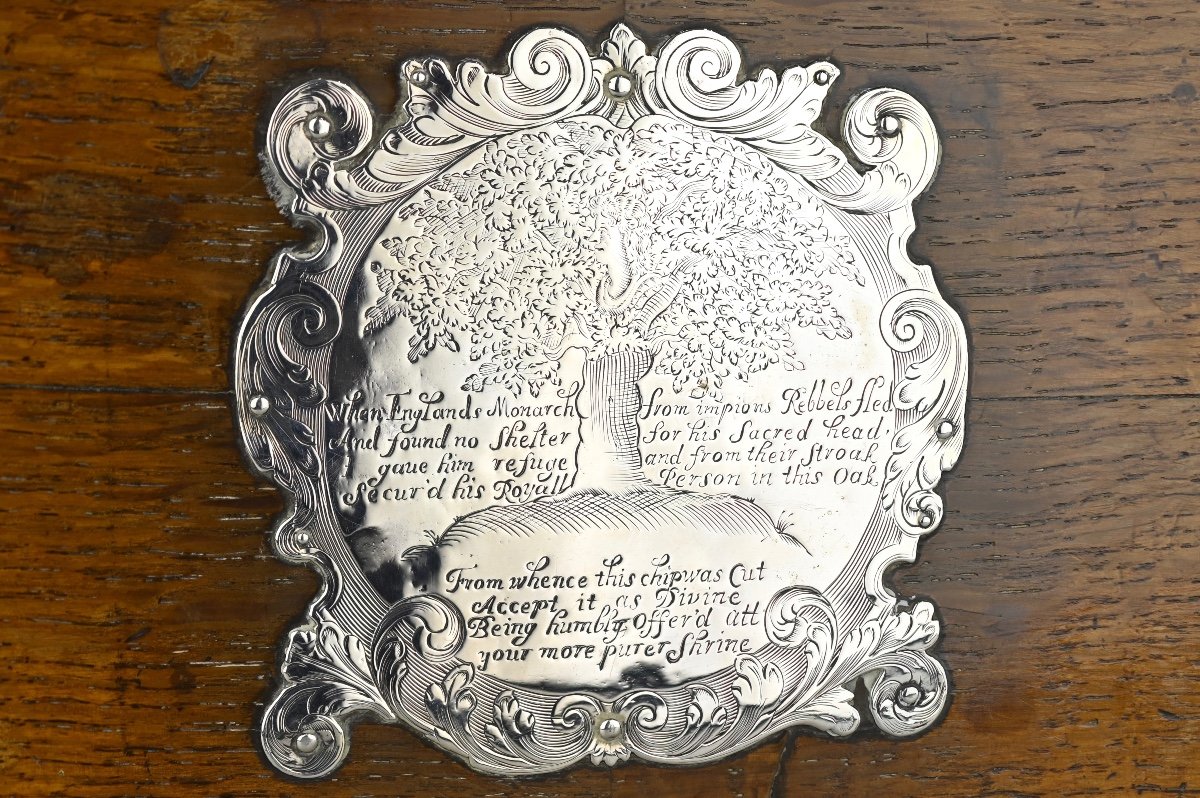



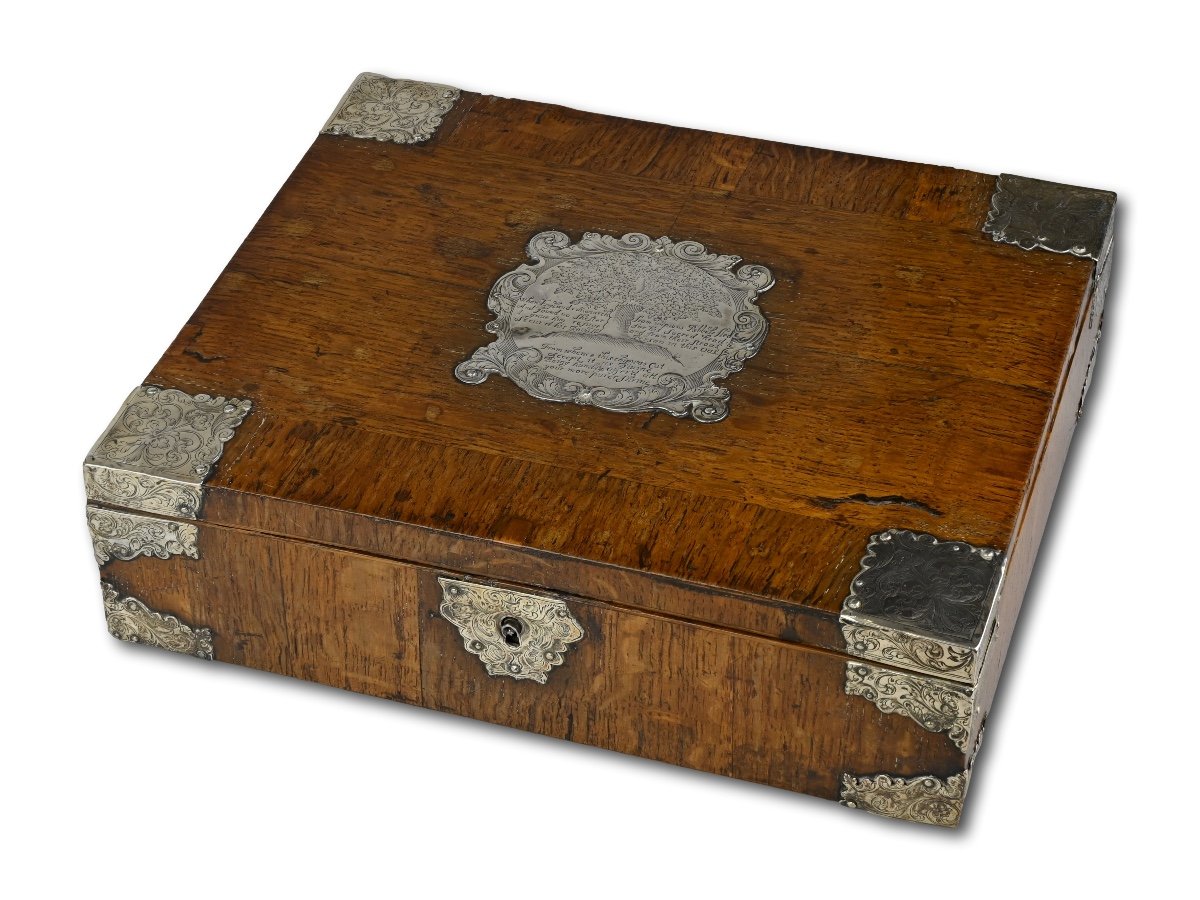
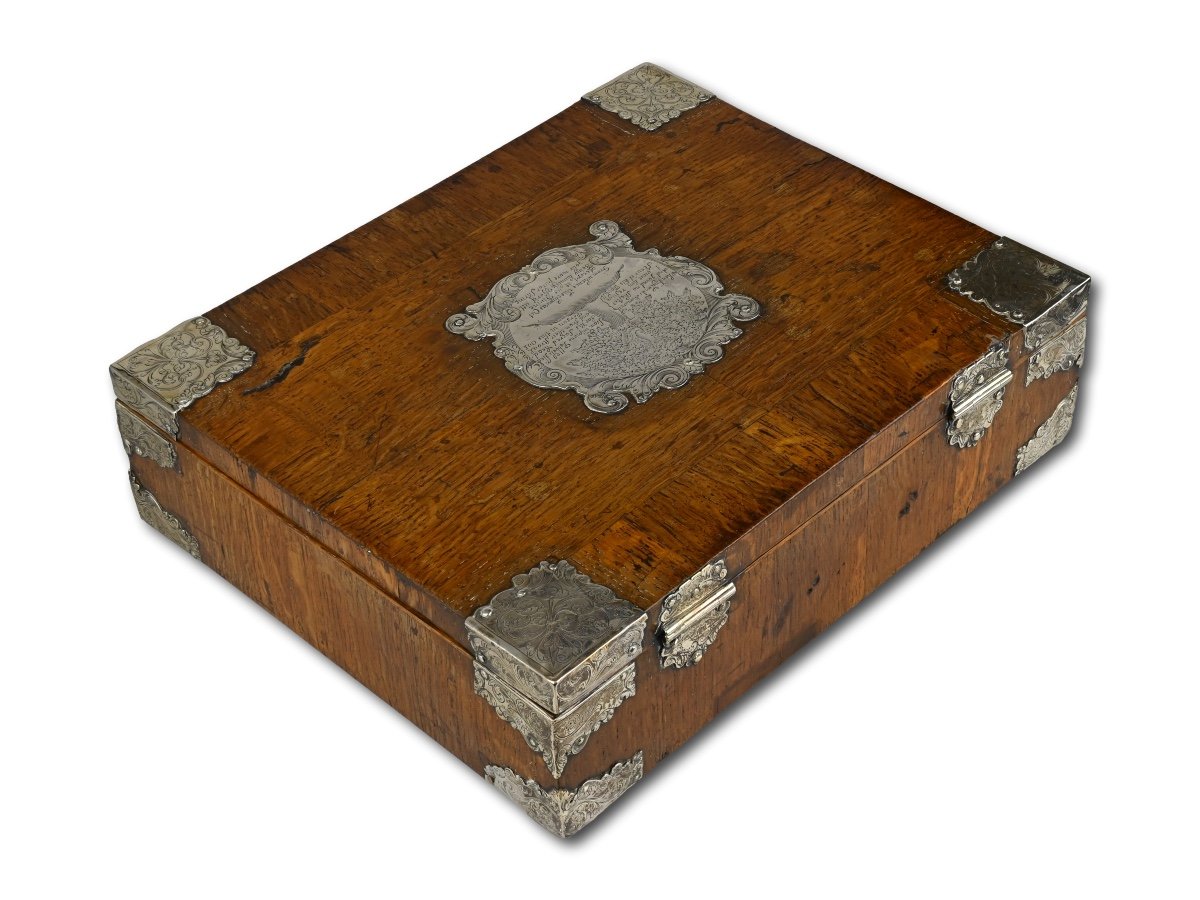
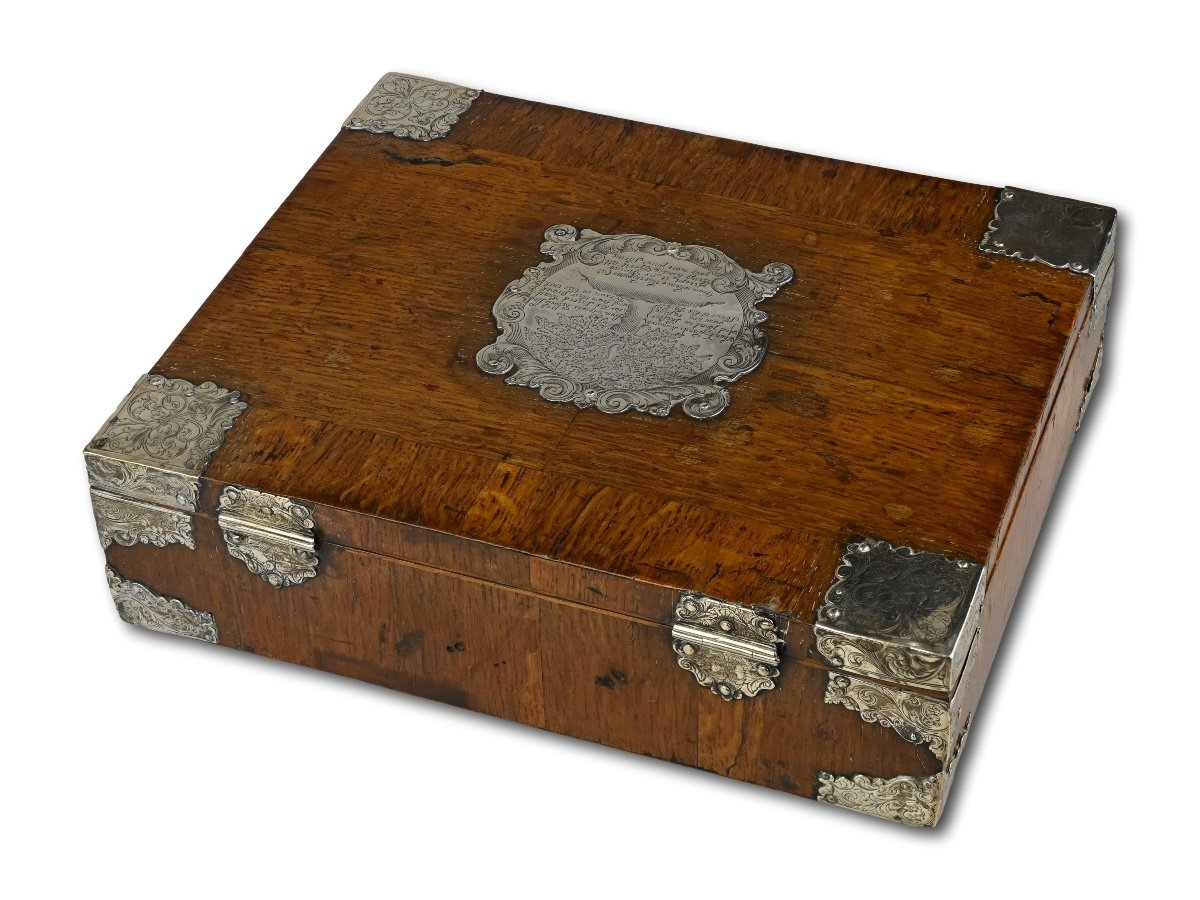








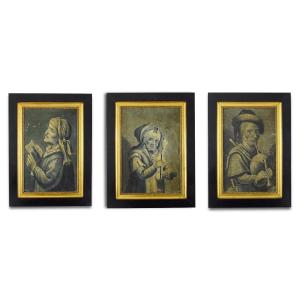










 Le Magazine de PROANTIC
Le Magazine de PROANTIC TRÉSORS Magazine
TRÉSORS Magazine Rivista Artiquariato
Rivista Artiquariato
